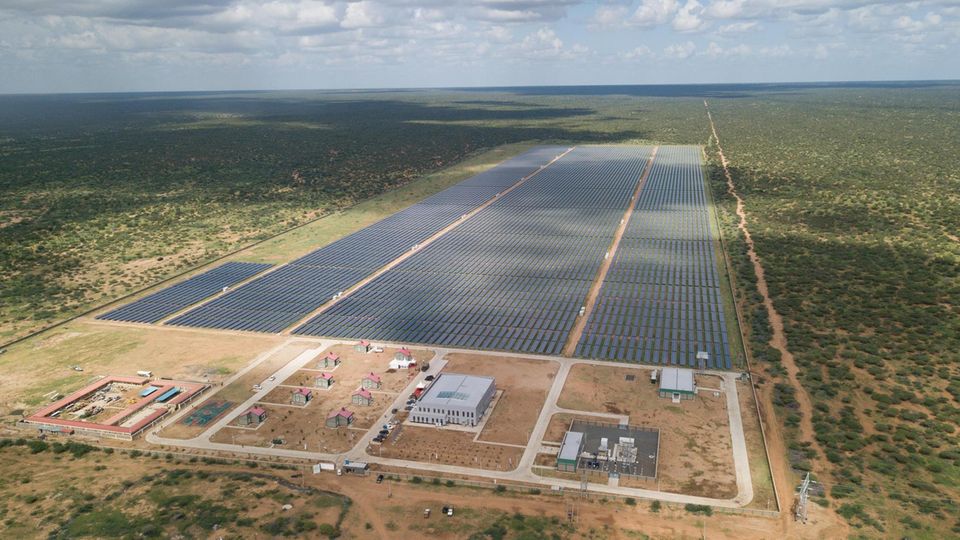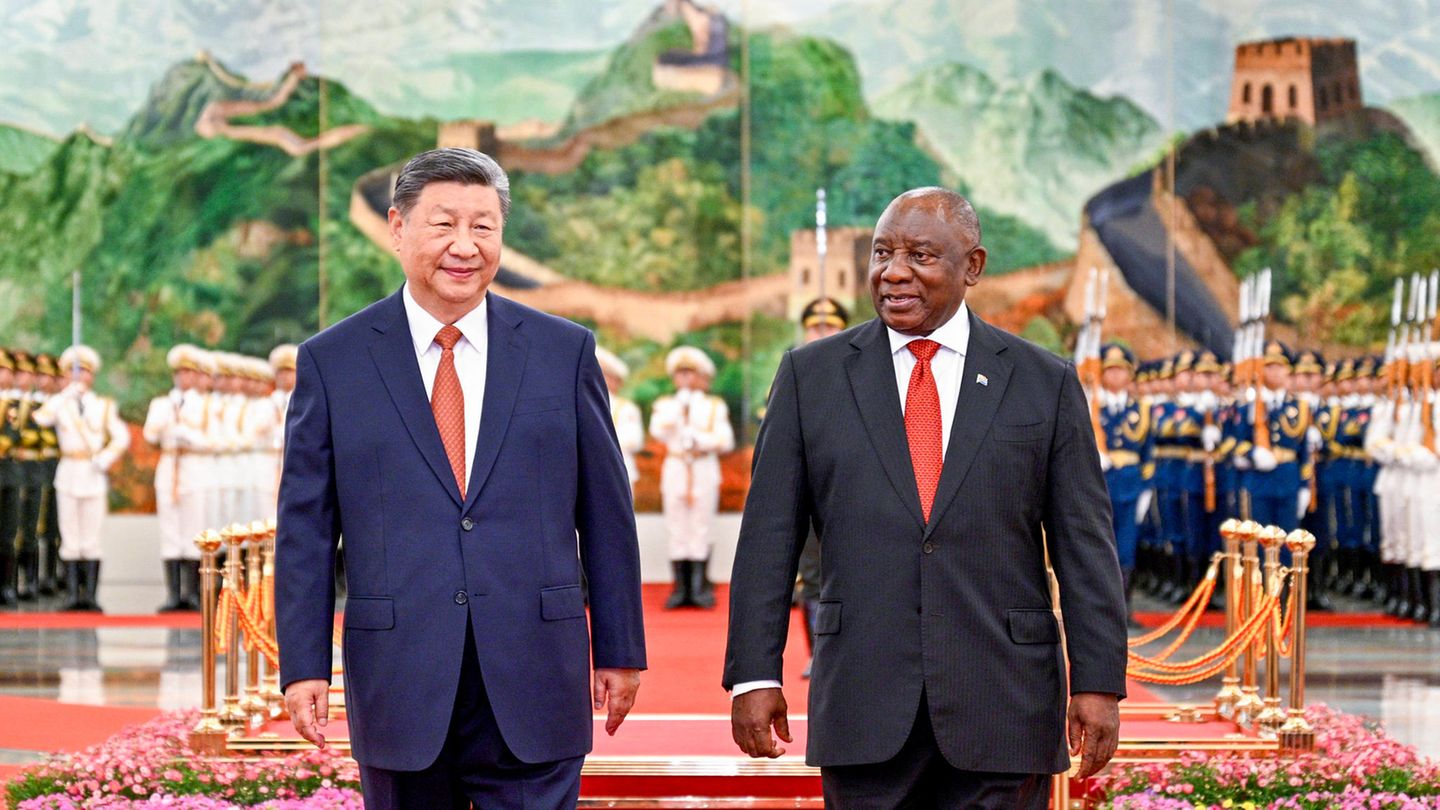China is the most important investor in Africa – and it should stay that way. According to Xi Jinping’s wishes, the green technology business should play a larger role in the relationship.
This is original content from the Capital brand. This article will be available for ten days on stern.de. After that, you will find it exclusively on capital.de. Capital, like the star to RTL Germany.
Expulsions, lost land, coercion. Shortly before this year’s summit of African heads of state with the Beijing government, climate activists are denouncing one of the dark sides of Chinese investments in Africa with a focus on Uganda. In a coastal area of Lake Albert, people suffered from the planned construction of an oil processing plant in connection with an oil production and pipeline project by the Chinese company CNOOC. The organization Climate Rights International is making serious allegations against government troops in the African country. The project is “not only a dangerous carbon bomb, but also a disaster for human rights,” explained director Brad Adams.
These are not the first allegations of this kind and will probably not be the last. The Global Development Policy Center (GDPC) at the University of Boston recently found that China’s engagement in Africa often receives poor ESG ratings because compliance with environmental and occupational safety requirements or social and governance issues – for example with regard to affected communities – is not taken seriously.
It examined some Chinese-funded energy infrastructure and industrial special economic zones in Egypt, Ethiopia and Nigeria – both preferred investment destinations – and found that while these had created jobs and promoted growth, there was “considerable room for improvement” in terms of compliance. As a result of lax or neglected environmental regulation, China’s involvement on the continent also had a negative impact on the greenhouse gas emissions balance: funds flowed predominantly into coal-fired power and into labor- and resource-intensive manufacturing industries, raw material extraction and construction.
Now the Chinese government – which has long been concerned with climate neutrality at home – is also making a shift in its relationship with Africa and is putting green technologies high on the agenda in economic relations. In any case, investments in infrastructure construction or greenfields as part of the Silk Road Initiative have already been declining in recent years. At the summit in Beijing starting on Thursday, the People’s Republic wants to boost business with Africa in renewable energies and e-mobility. After all, Chinese car manufacturers and solar and wind technology factories have built up significant overcapacity that they can no longer pump into EU and US markets without resistance.
More than 20 years of success is celebrated
Economic relations between China and Africa have intensified so significantly since the early 2000s that the People’s Republic is now the largest bilateral trading partner and the most important export destination for most African countries. Beijing has been the largest bilateral foreign direct investor in Africa since 2013 – and also the largest single bilateral creditor. “China’s deepening economic ties and investment flows to Africa are,” says the Boston-based GDPC, “the subject of debates about their design, their intentions and the balancing of benefits and risks – with potential long-term consequences for the continent’s industrial development, modernization and sustainable economic transformation.”
The white paper “China and Africa in the New Era: A Partnership of Equals” written by the Chinese State Council in 2021 concluded that since the Forum on China-Africa Cooperation (FOCAC) was established in 2000, Chinese companies had helped African countries build or modernize more than 10,000 kilometers of railway lines, almost 100,000 kilometers of highways, around 1,000 bridges, nearly 100 ports and 66,000 km of power transmission and distribution lines. According to data from China’s General Administration of Customs, China-Africa trade reached a record high of $282 billion in 2023.
Modern green technology “made in China”
When head of state and party leader Xi Jinping opens the ninth China-Africa summit, he wants to use the slogan of modernization to urge his guests from countries such as Gambia, Kenya, Nigeria, Zimbabwe and South Africa to give preference to Chinese manufacturers of wind and solar technology or electric vehicles for lower-emission industrial development. At the same time, Beijing wants to improve its access to raw materials that are needed for electromobility and future storage capacities and that are found in abundance in Africa’s soil – such as lithium, cobalt and copper in Botswana, Namibia and Zimbabwe.
Even before the summit, government officials and experts from both sides agreed in Shanghai on “more intensive strategic cooperation,” reported “China Daily”: to optimize energy structures and in the areas of low-emission technologies, climate-friendly financing and green talent factories. The energy transition from fossil fuels to renewable sources, it was said, is crucial for climate protection and requires increased investment in technology and infrastructure.
According to analyses by Boston University, Chinese lending for African projects has long since shifted to greener and more high-tech projects. Instead of financing more bridges or roads, funds were made available for solar farms, electric car factories or 5G stations for better internet. Of the $4.2 billion from 13 loans in 2023 to eight African governments and two regional banks, $500 million was offered for hydropower and solar projects.
Increase green energy sources sixfold
Africa itself has recently increased its energy transition ambitions. Before the 2023 World Climate Conference, the African Union (AU) committed itself at the first Africa Climate Summit to increasing the capacity of renewable energies sixfold from the current level of around 50 gigawatts by 2030. In this respect, China’s export targets could well fall on fertile ground with African state guests. But they are now also more cautious about additional debt.
China has been pursuing its growing commitment to climate protection in international relations for several years. In 2015, for example, a “South-South Climate Cooperation Fund” was established to help developing countries adapt to climate change. In 2021, Beijing promised the AU that it would invest more funds in clean energy rather than coal-fired power plants. In Kenya, Beijing financed the construction of a 50-megawatt power plant, which has since produced enough to supply more than 350,000 people in 70,000 households with electricity.

The World Resources Institute also points out that Beijing intends to focus more on “small and beautiful” projects in its commitments to the expansion of clean energy. The first major cooperation program planned is the “Africa Solar Belt,” which is intended to provide around 50,000 African households with decentralized solar power by 2027. Such solutions, such as “mini-grids” of small, autonomous networks, which are usually based on solar systems and local energy storage, are often uneconomical at first, making it difficult to find private investors and operators. The Chinese “solar belt” is also still in its early stages. Experts are demanding that both China and the West help to eliminate bottlenecks in the preparation of feasibility studies for project developers.
Electricity from solar energy is considered the cheapest source of energy in many parts of Africa – especially for households far from central power grids. Experts from the International Energy Agency (IEA) calculated in 2022 that the budget for planned Chinese investments in coal-fired power plants in Africa alone could cover around 50 percent of the new photovoltaic systems needed to supply electricity. According to the IEA’s sustainability scenario for Africa, around 80 percent of future electricity generation capacity could come from renewable energies such as solar, wind, hydropower and geothermal energy by 2030.
When it comes to protecting human or land rights, green projects are also called upon to show greater consideration. There were no protests against resettlement or violent attacks around Garissa, Africa’s largest solar power plant in northern Kenya, such as the one caused by Uganda’s oil project. But residents still complain that small farmers would have liked to benefit from the solar power for irrigation, but were not connected. The community did agree to the project at the time and compensation was paid for the land that was abandoned – today they say that they gave up 200 hectares of pastureland unnecessarily.
Source: Stern




